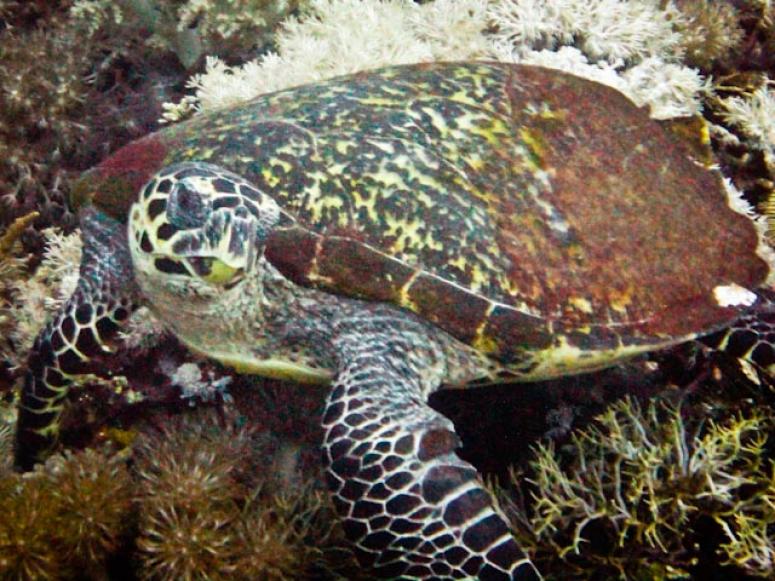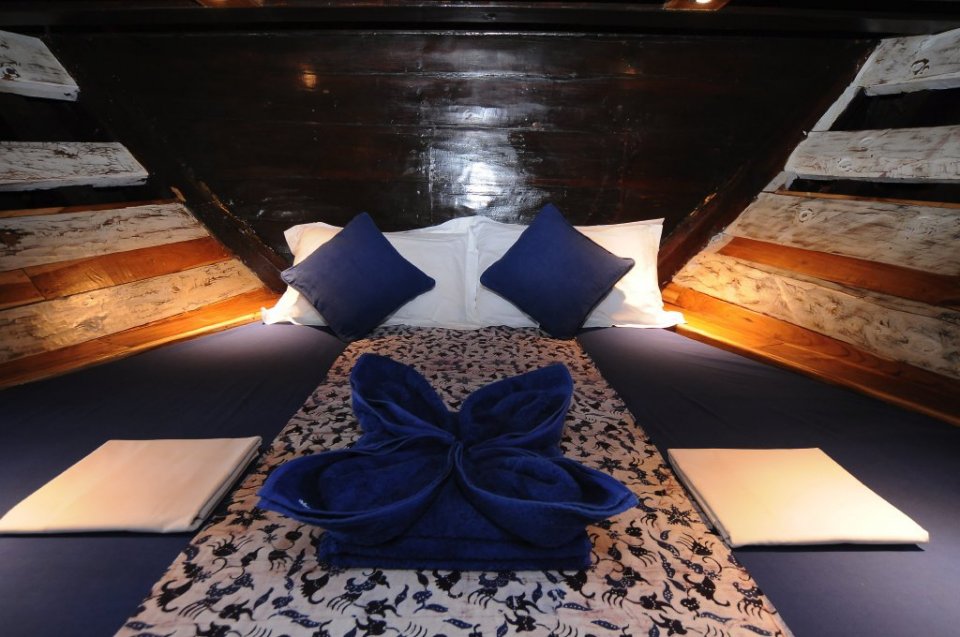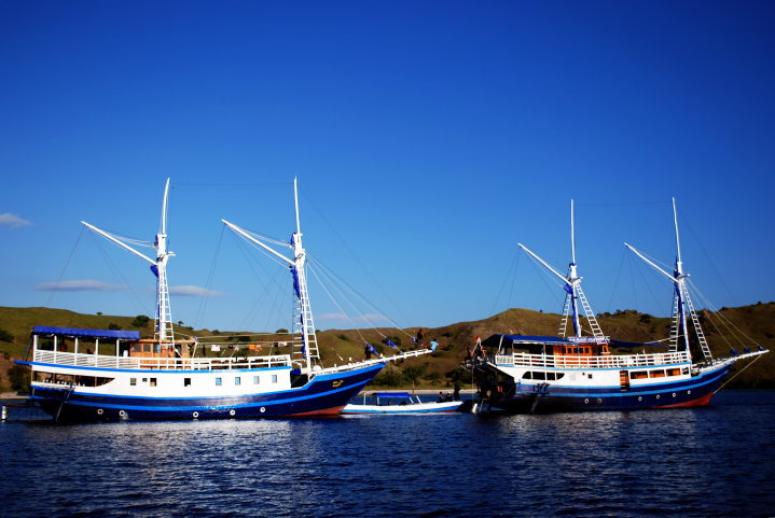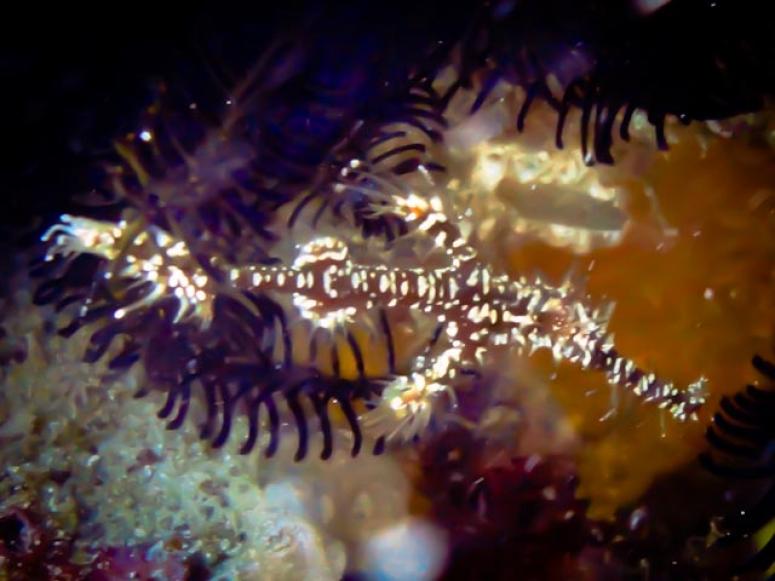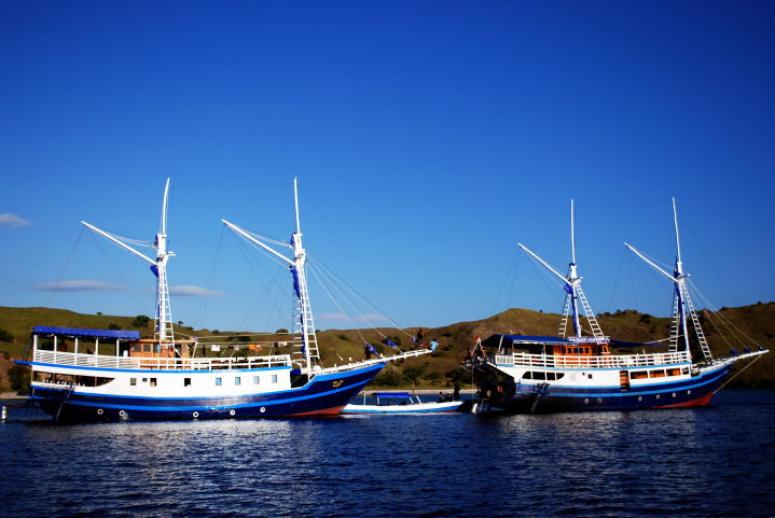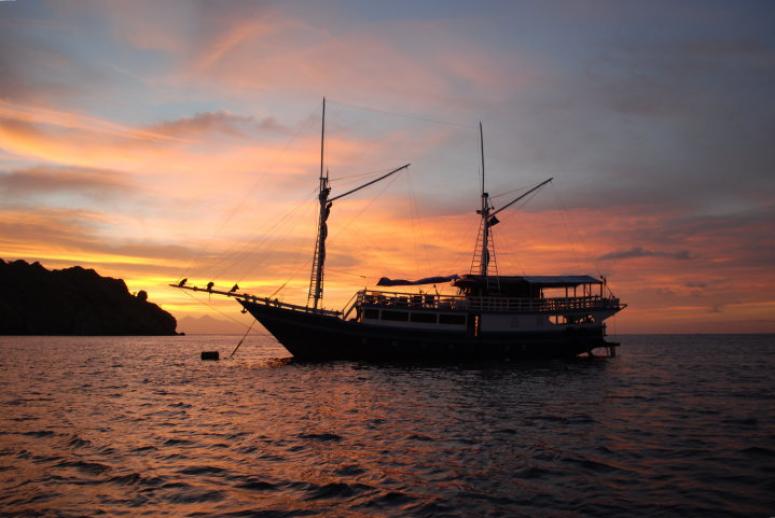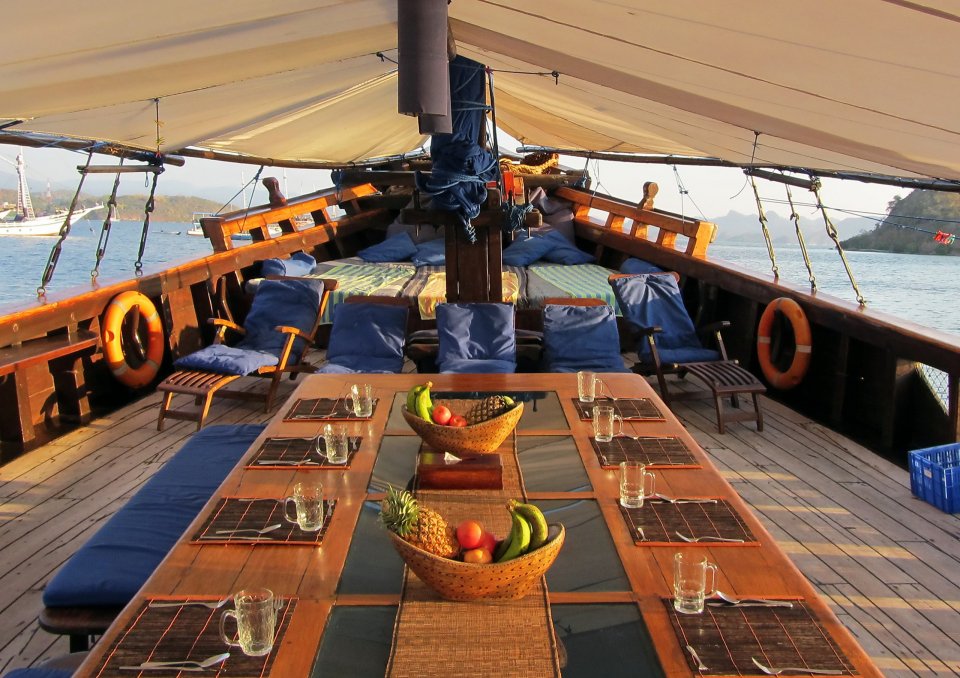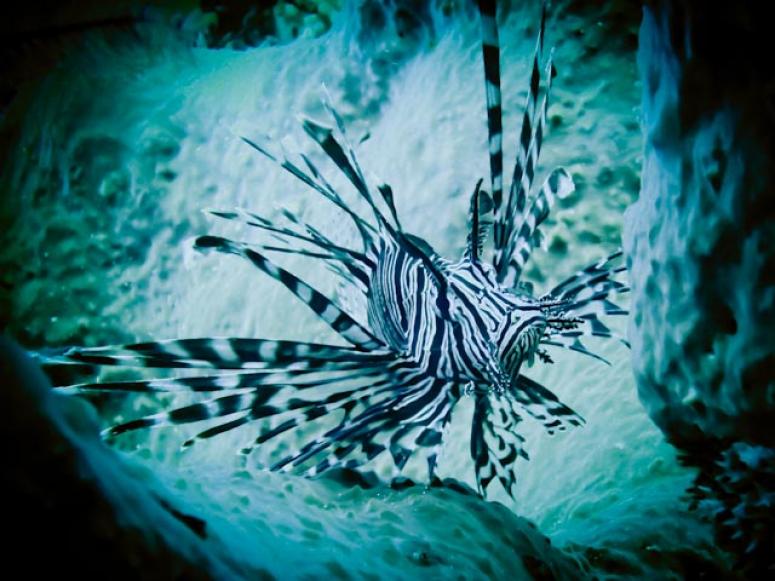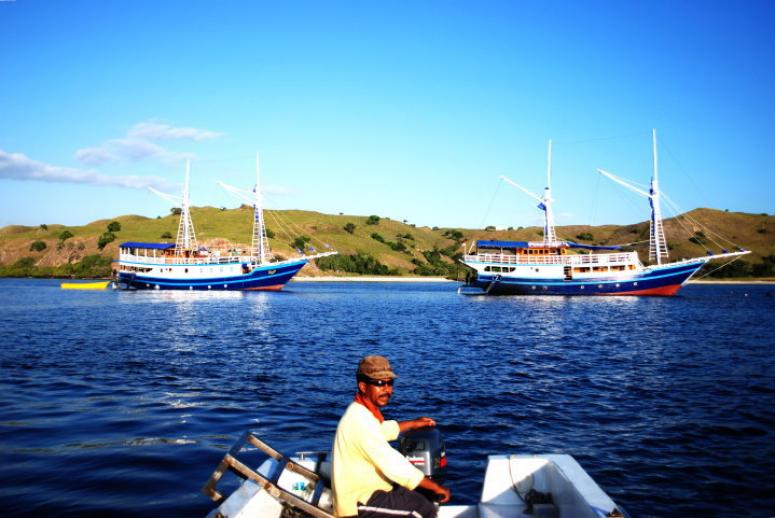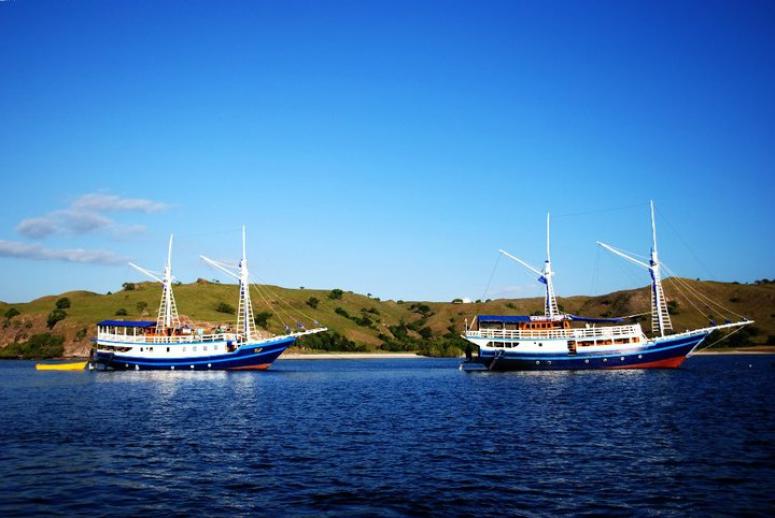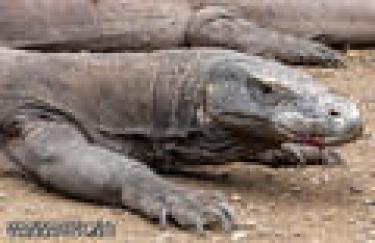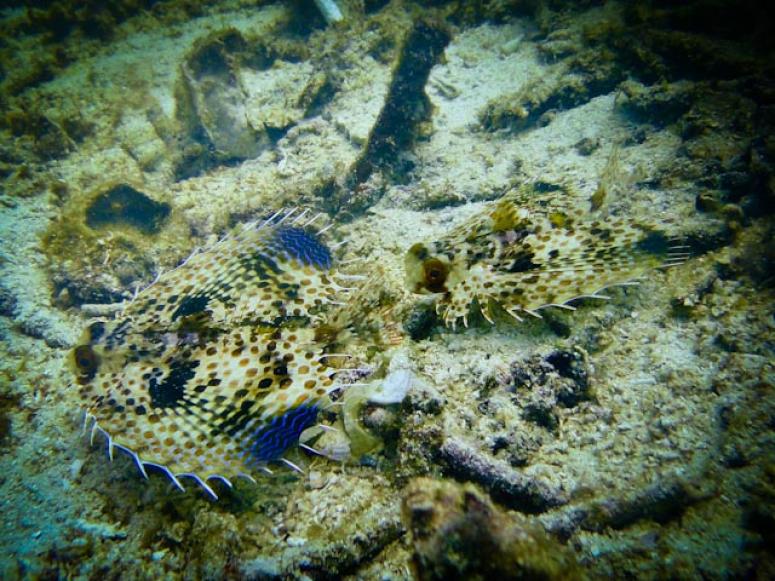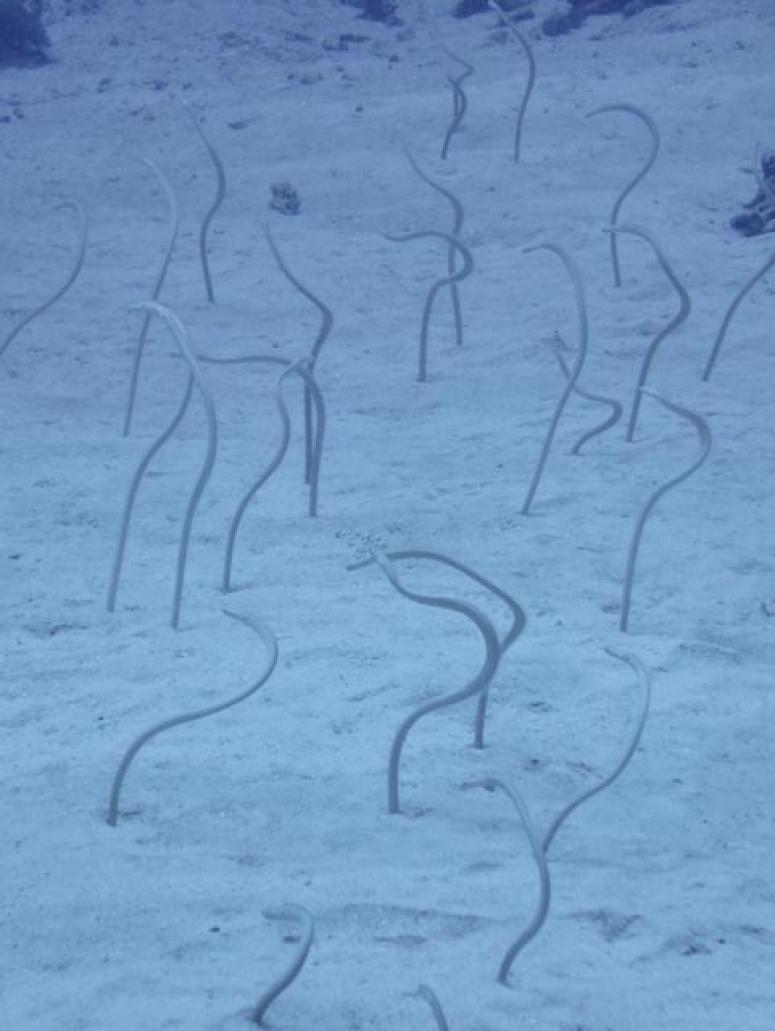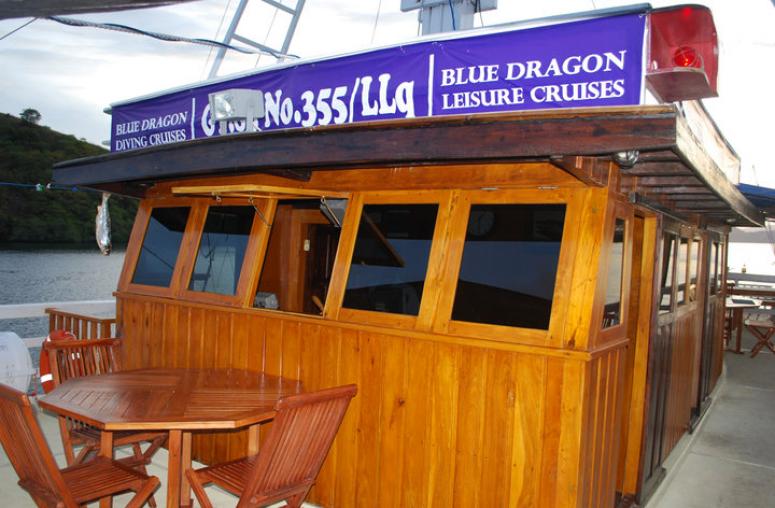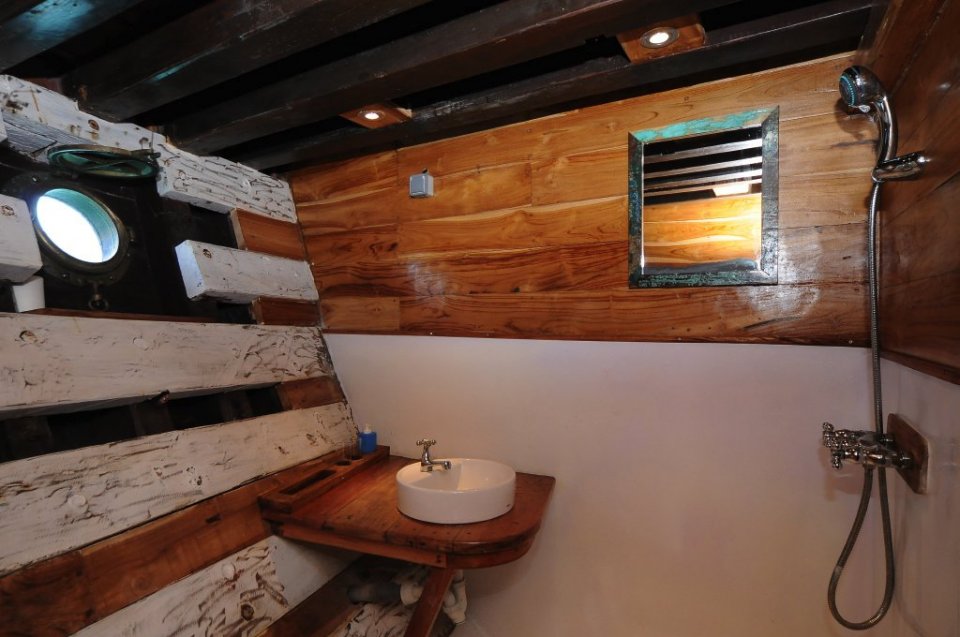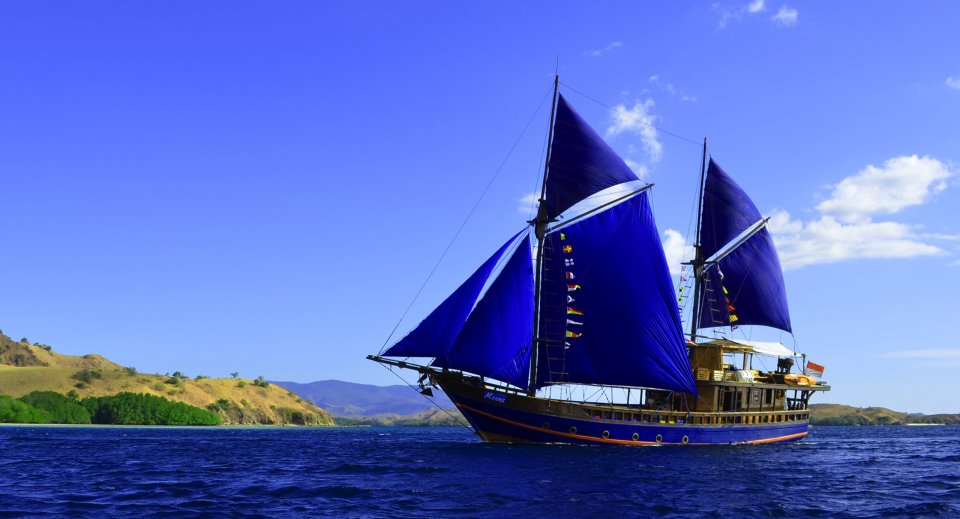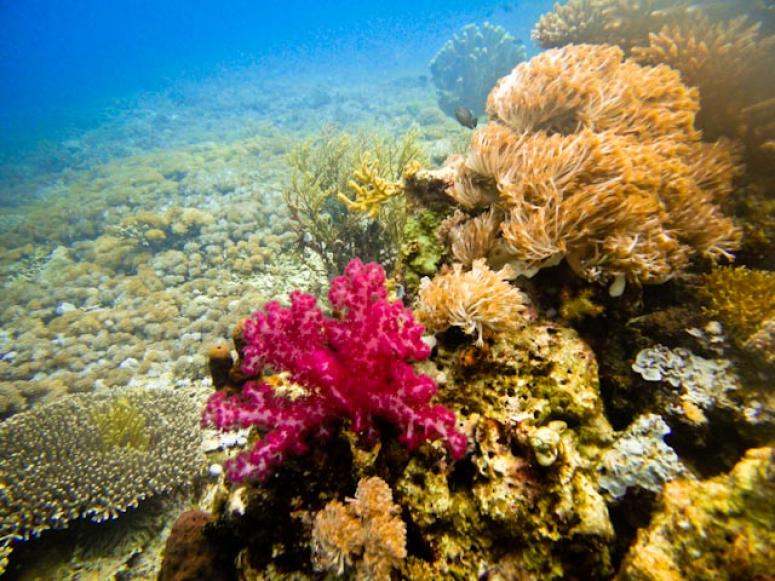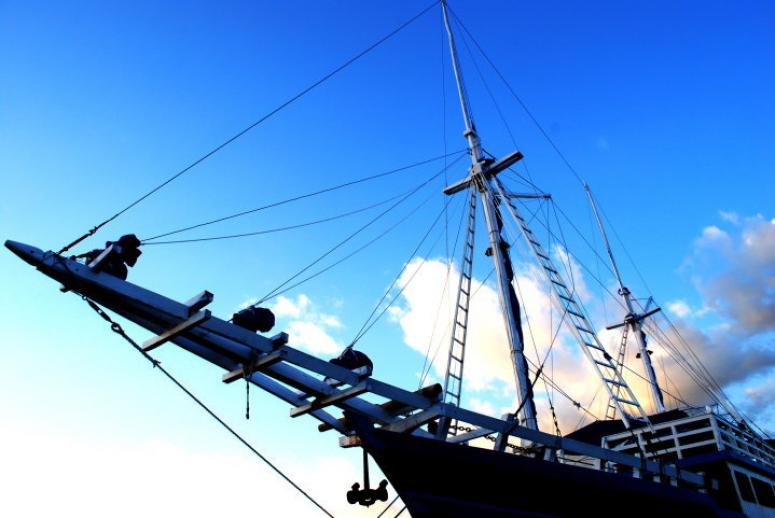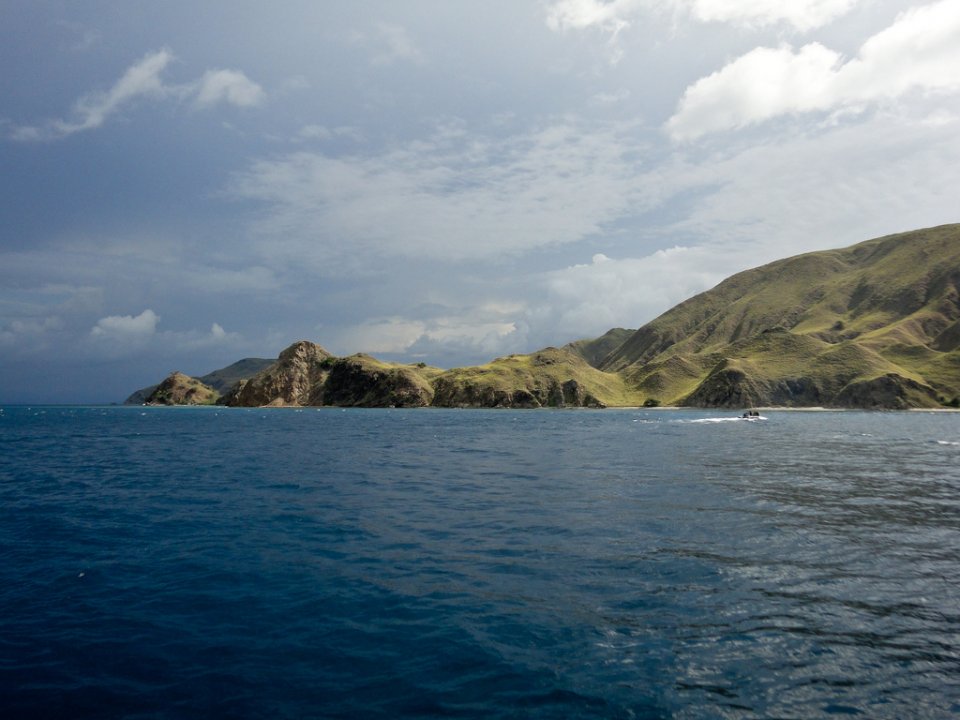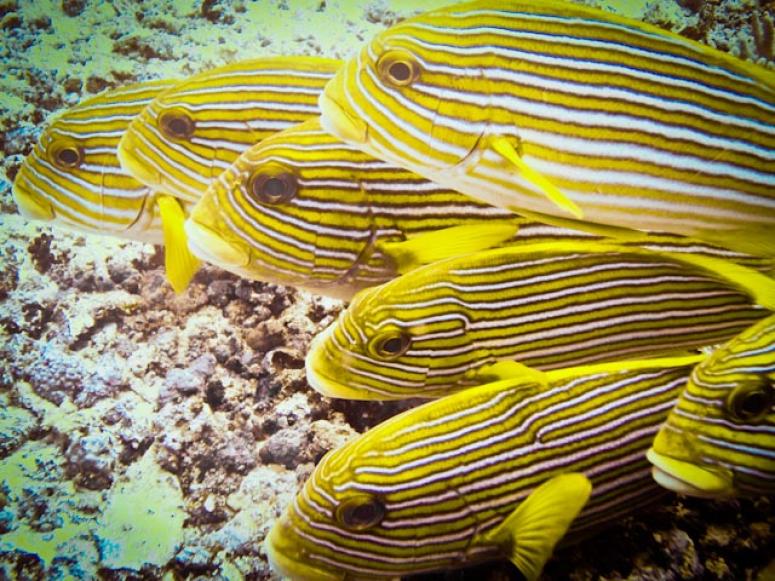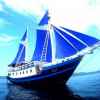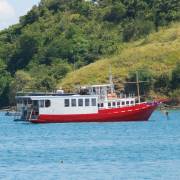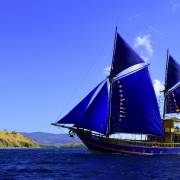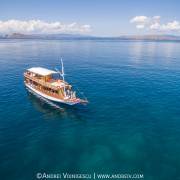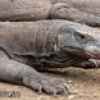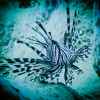Dive in Komodo
Diving packages in Komodo
-
7
DIVING/SNORKELING THE KOMODO NATIONAL PARK8 DAYS & 7 NIGHTS - 17 DIVES... The schedule is flexible depending on weather and water conditions but looks a little like this: Day 1: Start Of The Trip From Labuan Bajo - Upon collection from the Harbour side, our crew and cruise team welcome you aboard, after a short tour and explanation about the ship and your safety on board, we will be setting up the…1 045 $ More Information
Diving in Komodo
Diving in this area is definitely not for beginners. The currents are very fierce and there are nearly always down currents and large eddies, whirls as well as swells. Why? Check on the Indonesian throughflow below. (*) The water temperature ranges from 21°C to 27°C in the South, 24°C to 28°C in the middle and 25°C to 29°C in the North part of the park. Better bring a 5mm wetsuit with hood and wear gloves if you want to dive in the South part of the park. From November until January the visibility is at its best. The months of January to February are not so good, there might be some rain. The visibility in the North worsens and the South, although warmer than usual, can be difficult to reach because there often is a lot of wind. There are some easy drift dives around the Komodo islands, but most of the interesting diving is done close to rocks or small islands sticking out just a bit during low tide. Usually you dive on the lee side, where the current is not so strong and where there are some areas where it is safe to ascend at the end of the dive. The other side is usually inaccessible due to the fierce currents. Still, this kind of diving is only for someone who knows how to handle currents! You better have a safety sausage (inflatable signal device) along with you in case you get swept off and away to the open ocean after a dive. Here you only dive with a qualified dive operator from the area! (*) Indonesia Throughflow: Geologically, Komodo and Rinca are part of Flores lying on a relatively shallow shelf and are separated from Sumbawa by the Sape Strait where depths are almost 300m. This strait is one of the main channels for the Indonesian Throughflow (as is the Lombok Strait between Bali and Lombok and the Ombai Strait between Alor and Timor), a water movement that starts in the Philippines, flows past Sulawesi on the West and East and then hits the barrier of what is Nusa Tenggara (Lombok, Sumbawa, Flores). From here it finds its way to the Indian Ocean in the South. The Indonesian Throughflow is strongest during the South East monsoon (June, July, August) which means, that currents can be really strong here, reaching up to 8 knots (1 knot = 1 nautical mile per hour = 1.852 km per hour)!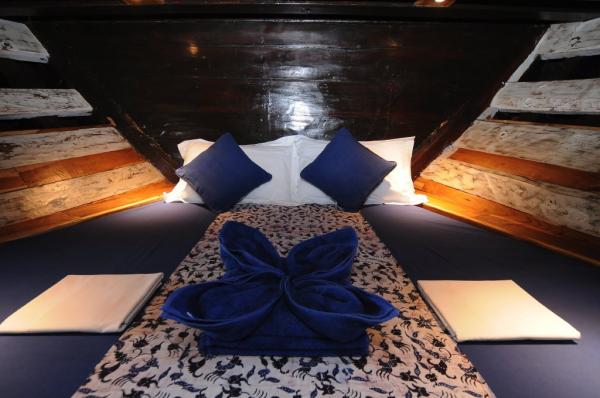
Travel to Komodo
The Komodo islands is the name of all the islands within the borders of the 'Komodo National Park' and include Komodo, Rinca, Padar and all the smaller islands totaling 603km² of land. The total size of Komodo National Park is presently 1,817km² but there are plans to expand it.
Komodo National Park was established in 1980 and was declared a World Heritage Site and a Man and Biosphere Reserve by UNESCO in 1986. The park was initially established to conserve the unique Komodo dragon (Varanus komodoensis), first discovered by the scientific world in 1911 by J.K.H. Van Steyn and which can be found on both Rinca and Komodo.
The majority of the people in and around the Park are fishermen originally from Bima (Sumbawa), Manggarai, South Flores, and South Sulawesi. Those from South Sulawesi are from the Suku Bajau or Bugis ethnic groups. The Suku Bajau were originally nomadic and moved from location to location in the region of Sulawesi, Nusa Tenggara and Maluku, to make their livelihoods.
Descendants of the original people of Komodo, the Ata Modo, still live in Komodo, but there are no pure blood people left and their culture and language is slowly being integrated with the recent migrants.
Diving in Komodo is not a new idea but recently it's being recognised as a premier destination due to the awesome variety of diving to be had. Crystal clear water and dive sites where you never see another diver provide a little something for everyone whether it's macro or massive you love. One day you can be crawling along the bottom looking at pygmy seahorses, frogfish and unusual nudibranch and the next you are in the big blue on an open water pinnacle as the mantas fly by, the sharks circle and the dolphins hunt, and the next day diving a live volcano!! For sheer variety there is no better place on earth.
Diving in Komodo is one of the few places left in the world where sharks are not rare, and down south manta rays have their legendary aggregations, meaning they are here in the area in their hundreds!!!
One of the highlights of these trips is the rare opportunity to walk with the lengendary Komodo dragons. These truly awesome beasts can reach 3 metres plus and can reportedly run at 20km an hour chasing their prey. It's the icing on the cake, Stunning diving and one of the world's last surviving dinosaur descendants all one amazing package. This is truly the trip of a lifetime.
Visiting the islands can be done as a day trip from Labuan Bajo or as part of a boat safari around the islands. There is an entrance fee for entering the park of Rp.150.000.

